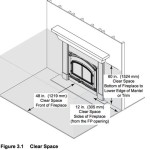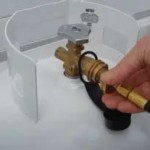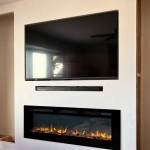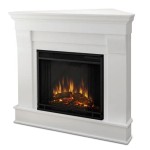Painting A Tile Fireplace Hearth: A Comprehensive Guide
Painting a tile fireplace hearth is a relatively inexpensive way to revitalize a living space and update the aesthetic of a fireplace. While tile is durable and designed to withstand heat, its appearance can become dated or simply clash with evolving design preferences. Painting offers a cost-effective alternative to the more extensive and potentially disruptive process of replacing the tiles entirely. This guide provides a detailed overview of the necessary preparations, materials, and steps involved in successfully painting a tile fireplace hearth.
Before commencing the painting process, it is essential to understand the type of tile comprising the hearth. Ceramic, porcelain, and natural stone tiles each require slightly different approaches. For instance, porous natural stone tiles may require a specialized primer and sealer compared to non-porous porcelain tiles. Identifying the tile type will ensure the correct products are selected for optimal adhesion and durability. Furthermore, assessing the condition of the existing tiles is critical. Any cracks, chips, or loose tiles should be repaired before painting to prevent future issues and ensure a smooth, uniform finish.
Preparation is Key: Cleaning, Repairing, and Priming
Thorough preparation is arguably the most crucial step in achieving a successful and long-lasting paint job. The first step involves meticulously cleaning the tile surface. This is not simply about removing surface dirt; it's about eliminating grease, soot, wax, and any other contaminants that could impede the paint's ability to bond properly. A strong degreaser, specifically designed for tile and grout, is recommended. Apply the degreaser according to the manufacturer's instructions, allowing it to dwell for the recommended time to effectively break down the accumulated grime. Use a stiff-bristled brush to scrub the tile and grout lines thoroughly. Rinse the surface with clean water and allow it to dry completely. A second cleaning with a TSP (trisodium phosphate) solution might be warranted if the hearth is heavily soiled.
Once the tile is clean, address any necessary repairs. Cracks can be filled with epoxy-based tile filler, carefully applied and smoothed to blend seamlessly with the surrounding tile. Loose tiles should be re-adhered using tile adhesive or thin-set mortar, ensuring they are level with the adjacent tiles. Allow all repairs to cure completely according to the product instructions before proceeding. Failure to address these issues will result in an uneven and potentially unstable painted surface.
Priming is an indispensable step, especially when painting tile, which is inherently non-porous. Primer creates a surface that paint can adhere to, preventing peeling and chipping. Select a high-quality bonding primer specifically designed for use on tile or other non-porous surfaces. Apply the primer evenly, using a brush or roller, ensuring to cover the grout lines thoroughly. Follow the manufacturer's recommendations for drying time before applying the paint. For particularly glossy tiles, consider lightly sanding the surface with fine-grit sandpaper after cleaning, but before priming, to further enhance adhesion. This creates microscopic scratches that provide more "grip" for the primer.
Selecting the Right Paint and Application Techniques
Choosing the appropriate paint is another critical factor in ensuring a durable and aesthetically pleasing result. High-heat paint, readily available at most hardware stores, is the preferred option for fireplace hearths due to its ability to withstand temperature fluctuations. Acrylic latex paints are also suitable, provided they are of high quality and designed for interior use. Avoid oil-based paints, as they can yellow over time and are not as resistant to heat as acrylic or specialized high-heat paints.
Consider the desired finish when selecting the paint. Semi-gloss or satin finishes are generally recommended for fireplace hearths due to their durability and ease of cleaning. Matte finishes, while visually appealing in some contexts, are more susceptible to staining and scuffing. The color choice should complement the existing décor and style of the room. Before committing to a specific color, test a small area of the primed tile to ensure it achieves the desired effect. Observe the color in different lighting conditions to avoid any unpleasant surprises.
Apply the paint in thin, even coats using a high-quality brush or roller. Multiple thin coats are preferable to one thick coat, as this reduces the risk of drips, runs, and uneven coverage. Allow each coat to dry completely according to the manufacturer's instructions before applying the next. Pay particular attention to the grout lines, ensuring they are thoroughly covered with each coat. For a smoother finish, consider lightly sanding the painted surface with fine-grit sandpaper between coats, followed by wiping clean with a tack cloth.
Sealing and Maintenance for Longevity
Once the paint has fully dried and cured, applying a sealant is highly recommended, especially for hearths that are frequently used. A sealant provides an extra layer of protection against stains, scratches, and moisture. Select a water-based polyurethane sealant designed for interior use. Apply the sealant in thin, even coats, following the manufacturer's instructions for drying time and application. Consider applying two or three coats for enhanced protection.
Regular maintenance is essential to preserve the appearance and integrity of the painted tile hearth. Clean the surface regularly with a mild detergent and water, avoiding harsh chemicals or abrasive cleaners that could damage the paint or sealant. Wipe up spills promptly to prevent staining. Periodically inspect the painted surface for any signs of chipping, peeling, or cracking. Touch-up any damaged areas as needed, following the same preparation and painting steps outlined above. With proper care and maintenance, a painted tile fireplace hearth can provide years of enjoyment and enhance the beauty of a living space.
Finally, be aware that while high-heat paint is resistant to the radiant heat of a fireplace, it is not fireproof. Avoid direct contact with flames or embers. Over time, even with proper maintenance, the paint may require touch-ups or a complete re-painting to maintain its optimal appearance. This is a normal part of the upkeep process and should be factored into the long-term maintenance plan.

How To Paint Fireplace Tile Diy Makeover A Blossoming Life

Painting Fireplace Tile The Ultimate Guide Jessica Welling Interiors

How To Paint Tile Easy Fireplace Makeover Setting For Four Interiors

Painting Fireplace Tile Ridiculously Easy Diy Makeover Tiny Hands Tidy Home

How To Paint Fireplace Tile Easy Home Update Allisa Jacobs

How To Paint Tile Easy Fireplace Makeover Setting For Four Interiors

How To Paint Fireplace Tile Easy Home Update Allisa Jacobs

Painting A Fireplace Hearth Three Daughters Home

How To Paint A Tile Fireplace Des And Sses

Before And After The Best Room Makeovers Paint Fireplace Tile
Related Posts








